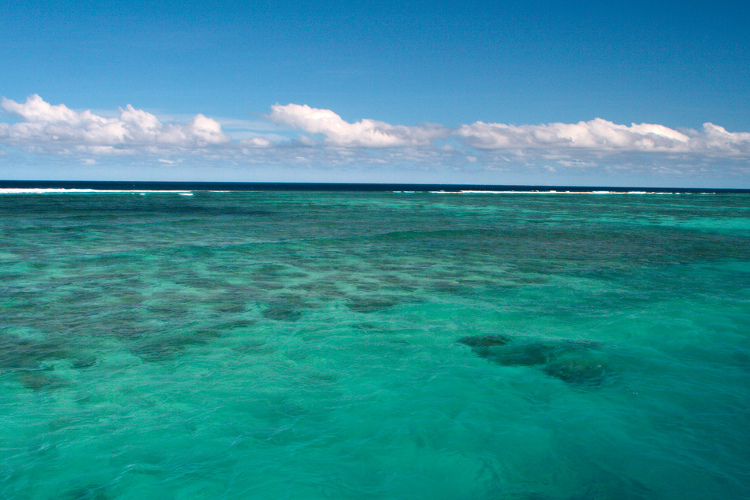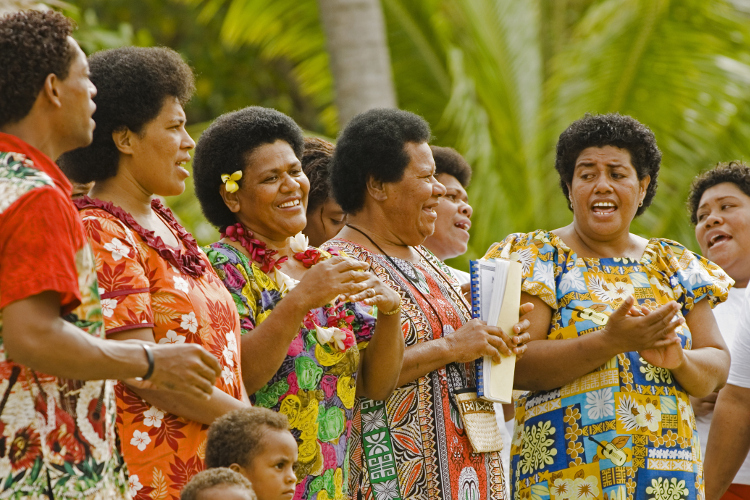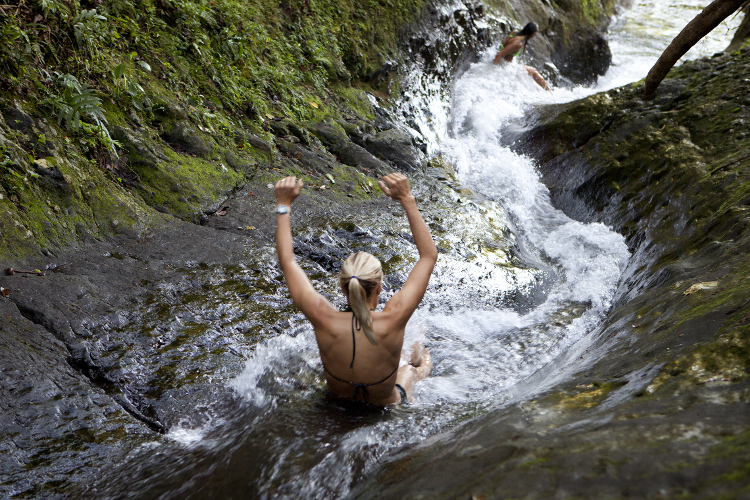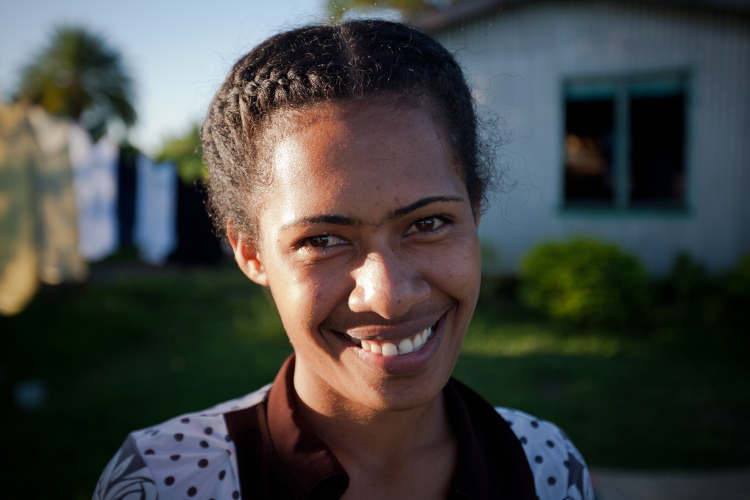With myriad greens in the landscapes, yellows and chartreuse mingling as palm trees rustle in the breeze and the bright oranges of ripe mangos and papayas, Fiji flaunts all the feel-good colors. White waterfalls tumble into black lava rock pools for some calming notes. Everywhere you turn there’s something colorful to make you smile. Then there’s the brilliant blue and green of a sea that’s comfortably warm enough to plunge into while still being refreshing. Below the surface are thriving corals and enough fish to impress Jacques Cousteau. Dive in because few things on Earth can make you feel better than a dip in a turquoise blue sea.

With balmy temperatures hovering between 26 and 31 degrees Celsius (79 to 88 degrees Fahrenheit) few complain of the cold in Fiji. Clothes are needed for modesty only and life happens mostly outdoors. With all the sunshine no one is going to end up vitamin D deficient and plenty of rain keeps the land fresh and thriving with abundant food and clean water. This facilitates keeping in tune with nature, perhaps by enjoying the phases of the moon on warm nights, embracing the joy of a sunset or appreciating a happy jolt from cool raindrops on the skin.
Fiji has a very tight-knit society that is mostly village based. Even the cities feel small and aunts, uncles and cousins are likely to live in the same neighborhood. Kids are cared for by the community, and –yes nowhere is perfect – the crime rate is low. Young people are free to roam around and play. The bond between people and the support they offer each other is palpable. Perhaps it’s this solid base that makes Fijians so friendly and welcoming to visitors.

Fiji is known to have some of the best food in the South Pacific thanks to the Indian, Southeast Asian and Chinese influences blended with Melanesian staples like taro, tropical fruits, coconut, pork and seafood. Because it’s expensive to import food, much of what’s available is local, fresh and there’s an evolving organic kitchen garden movement from the individual level to villages and resorts. Just looking at the fruit dripping from the trees, the numerous fish in the ocean and the smells wafting from Indian restaurants is enough to make most people smile – and lick their lips.
Called Yaqona in Fiji, this ceremonial narcotic is more popular than beer in these islands. Pass through any village and chances are someone will be drinking it and they may offer you a bowl, or three. It tastes like muddy water and if you drink too much your mouth gets Novocain-numb, but in return, you get a sense of well-being and the beautiful Fijian world around you becomes even more calm. Other than the taste, the process of drinking kava is relaxing: half-coconut bowls are passed to each drinker individually, you clap your hands once and say ‘bula’ (meaning hello, love, and more) before downing it (ideally) in one gulp. This close and social ceremony brings people together while they enjoy the tranquility of the kava. Kava makes people serene, so unlike alcohol, it doesn’t result in drunken drama or boozy brawling.
A warm starry night, a good meal and some kava drinking inevitably means that the guitars come out and everyone sings, slaps their knees, plays the spoons or just hums along with the song. No one is going to be playing anything too serious or sad, rather you’ll be hearing fast paced Fijian tunes or upbeat Western favorites. Even the biggest grouch in the world would be hard-pressed not to smile with this sort of revelry going on.
No watch? No problem. No one hurries in Fiji. When plans are delayed, things don’t go as expected or something just slipped up somehow, people don’t worry or dwell, chances are they’ll take a nap, chat with a friend or have another bowl of kava. It’s amazing how much stress this elastic attitude about time alleviates. What will be will be, just keep on having a good time.

Religion runs deep in Fiji and the Christian, Islamic, Hindu and Sikh faiths are all well represented. But beyond the churches and temples (which fill on their days of worship), the Fijian culture itself holds many traditions. Sevusevu, whereby a visitor presents the village elder kava root, then it’s served in a traditional ceremony, is deeply important. When walking through villages it’s imperative to wear a sulu (sarong) to cover the legs, shoulders and upper bodies should be covered and no one should carry a bag from a shoulder strap or wear a hat. While all this sounds complicated, these rules show respect for the community and inspire unity.
Visitors mostly see the native Fijian side of Fiji but in fact only 57 percent of the population claim full Fijian ancestry. The majority of the remaining islanders are Indo-Fijians of Indian heritage but Chinese, Southeast Asians, European, and other Melanesians and Polynesians (from elsewhere in the Pacific) have settled here. Like in any society, a mix of cultures doesn’t make for perfect harmony, but it keeps things interesting. If variety is the spice of life, Fiji is a fiery hot curry.

Fiji has had a rocky political past and only recently held open democratic elections again after a coup in 2006. But even at its most tense, serious violence has not been an issue here and the current situation appears to be solid. With the isolation of island life most people try not to worry too much about the problems of the world and the closeness of a system of local governments means people feel that their opinions and community actions actually make a difference.
Celeste first visited Fiji when she was 15 and almost ran away from home to stay. Eight years and many travels later she ended up in French Polynesia where she lived for fifteen years while continuing to fall in love with and explore the South Pacific. She's contributed to around 50 Lonely Planet titles and her writing can be found in publications from BBC Travel to Islands Magazine. Read more here www.celestebrash.com.